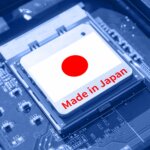How Japan’s ambitious Rapidus sparks hope and skepticism in Hokkaido
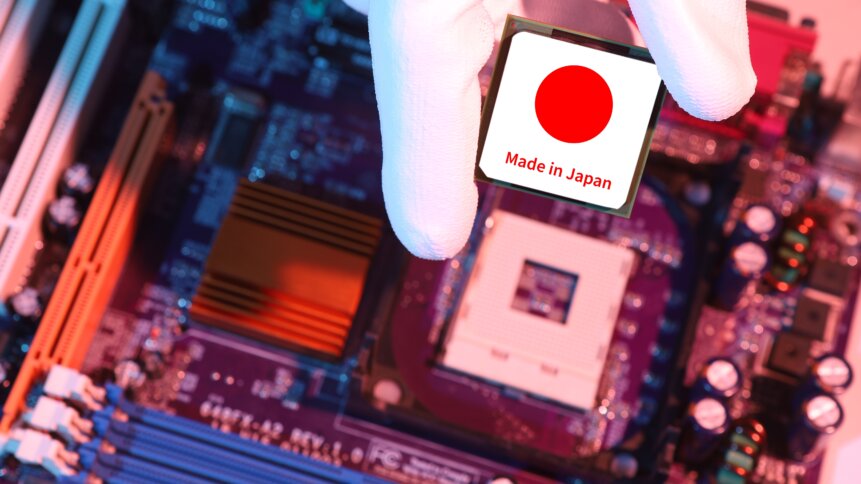
- Rapidus – Hokkaido’s largest-ever development project – aims to revive the semiconductor industry in Japan.
- The startup’s plan to start chip production in two years.
- Rapidus has support from major firms in Japan.
Like the United States, once the birthplace of semiconductors, Japan has been grappling with a gradual decline in its chip manufacturing capabilities for decades. Then, the pandemic happened, demanding efforts by both governments to regain lost ground. By August 2022, a consortium of Japanese companies, including Toyota Motor, Sony Group, NTT, and approximately ten others, had formed Rapidus, a chip startup meant to bring Japan back to its semiconductor glory days.
Rapidus was created with US$510M in subsidies from the Japanese government and contributions from Toyota, Sony, Kioxia, NEC, NTT, Softbank, and Denso, with each company putting in US$6.8 million. The goal was to create a national champion to turn IBM’s 2-nanometer (nm) chip design into production-ready silicon at scale in the latter half of this decade.
While Rapidus’ ambitious goal of achieving mass production of 2nm logic chips by 2027 appears to be a highly challenging undertaking, a collaboration with IBM is meant to expedite its objectives and enhance the prospects of success. After all, Japan’s chip industry has been lagging behind global leaders by approximately a decade. The most advanced semiconductors today are built on the larger 3nm node.
In a way, the Rapidus endeavor strives to revisit the glory days of the 1980s and 90s when Japan housed industry-leading semiconductor factories. Over time, companies like NEC, Toshiba, and other well-known names lost their competitive edge by avoiding the necessary risks to stay at the forefront.
Ultimately, the 14-month-old startup’s goal is to create state-of-the-art chips from the ground up as a component of its larger vision to construct a Silicon Valley-inspired ecosystem. Rapidus brings with it a strong backing with substantial financial support from the Japanese government.
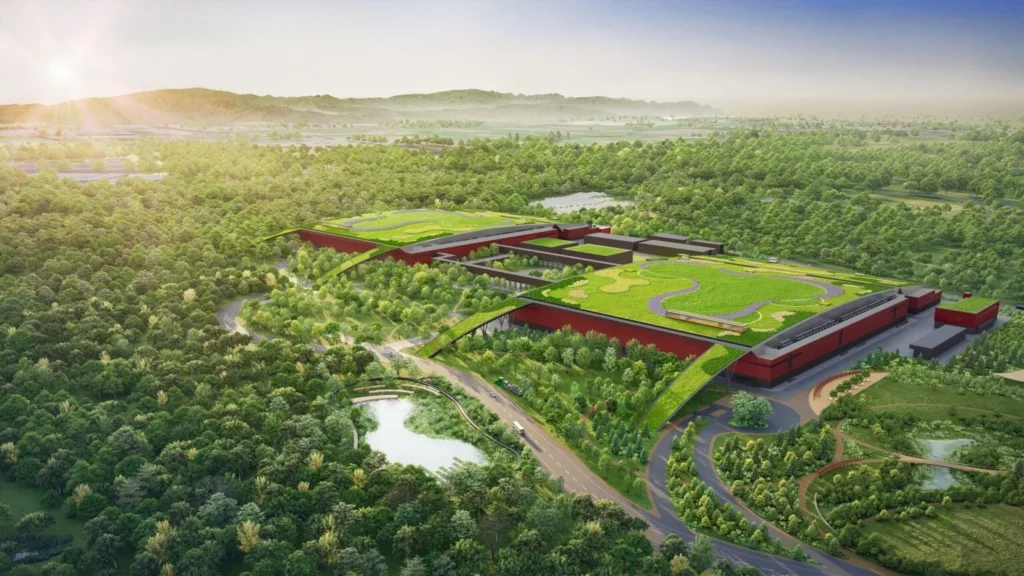
Construction of IIM-1, the first facility in Japan to produce state-of-the-art logic semiconductors at 2nm and beyond, began in September this year. Source: Rapidus
What is Rapidus doing for Hokkaido, Japan?
Rapidus envisions the development of a chip manufacturing cluster that stretches across the entire nation, with convenient access to numerous ports, as outlined by CEO Atsuyoshi Koike. “My big ambition is to realize a ‘Hokkaido Valley’ that spreads from Tomakomai to Ishikari, and that can compete against Silicon Valley in size,” Koike, 71, a former Western Digital Corp. executive, told Bloomberg News in a September 2023 interview.
“We have a chance to become a North Star that sets the trend in the global chip industry,” he said. Koike started by inviting manufacturers at every stage of the supply chain to consider investing in Japan’s northernmost Hokkaido prefecture, where Rapidus is constructing a factory to begin pilot line operations in 2025.
Announced in February 2023, Rapidus plans to build the plant, expected to be the nation’s most advanced, in Chitose, about 36 kilometers southeast of Sapporo, the capital city of Hokkaido prefecture. The investment alone is being hailed as a massive economic win for Hokkaido, estimated to be worth around 5 trillion yen (US$37 billion).
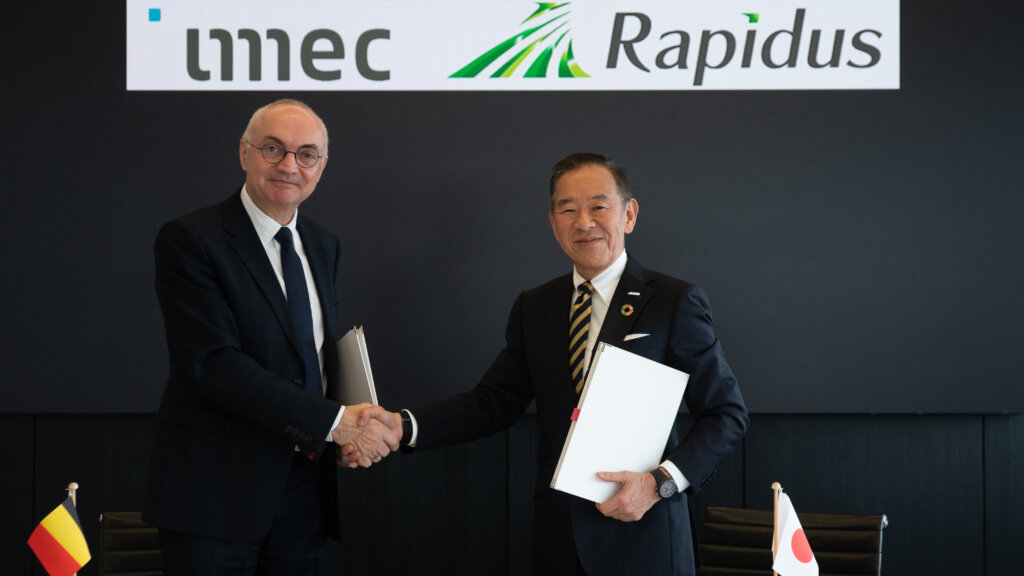
Agreement with IMEC underscores importance of global collaboration and represents a key milestone in Japan’s pursuit to reclaim a leading position in the worldwide semiconductor ecosystem. Source: IMEC
Koike claims the company will need 2 trillion yen for research and development before starting trial production and 3 trillion yen to start mass-producing semiconductors. So far, the chip startup has a cooperation agreement with Belgian nanotechnology developer Interuniversity Microelectronics Center (IMEC) to build international cooperation on designing and manufacturing the former’s chips, according to the government.
Even California-based Lam Research Corp and Dutch semiconductor equipment maker ASML Holding N.V. are considering setting up their shops in Hokkaido. After all, since Rapidus aims to manufacture chips at the 2nm process node, it will require ASML’s most advanced EUV, or extreme ultraviolet lithography tools to help create the circuitry of the chips.
A report by Nikkei indicated that 50 ASML engineers will install an ASML EUV machine on a prototype line in Chitose City, Hokkaido. That is not all, though–Koike also claimed that many other Japanese chip material suppliers and equipment makers are considering production sites close to Rapidus’ upcoming plant.
“We will complete the plant at an unprecedented speed, as the company name Rapidus implies,” Koike said after Rapidus broke ground on its IIM-1 plant in Hokkaido on September 1.
One too many hurdles?
In an article by the Center for Strategic and International Studies (CSIS), experts acknowledge that the Rapidus-IBM-IMEC collaboration is arguably one of the most ambitious in the history of the global semiconductor industry. “The consortium proposes to leapfrog multiple intervening nodes in two to three years to begin production at 2nm. This would constitute an unparalleled technological feat,” they said.
To begin with, competing with TSMC and Samsung will be challenging. Both have fabs that are already producing chips based on their respective 3nm process nodes and are expected to bring 2nm process tech to market beginning in 2025. However, Rapidus lacks experience producing advanced chips, and there is no clear sign that it can tap into the expertise of established companies like TSMC and Samsung.
For now, the potential path to success lies solely through IBM’s technology. But there is also no denying an ongoing nationwide labor shortage, which is driving up labor costs, along with a notable rise in construction material prices. Local reports indicate that an estimated maximum of 6,000 people a day would be needed at the Rapidus construction site, but that has since been downsized to 4,000 a day.
Even so, the company still believes the facility will be ready for the 2025 pilot line, despite other projects in the Hokkaido region also demanding a significant labor workforce. Once the plant is built, the next challenge lies in Rapidus’ ability to promptly secure a sufficient number of skilled engineers for its operations.
As it is, there is a scarcity of proficient workers essential for the installation and operation of semiconductor manufacturing equipment, which has already led to delays at TSMC’s facilities in Arizona. During the September 1 groundbreaking ceremony in Chitos, however, the company revealed it has already hired more than 200 people to bring the facility online on schedule, according to a Bloomberg report.
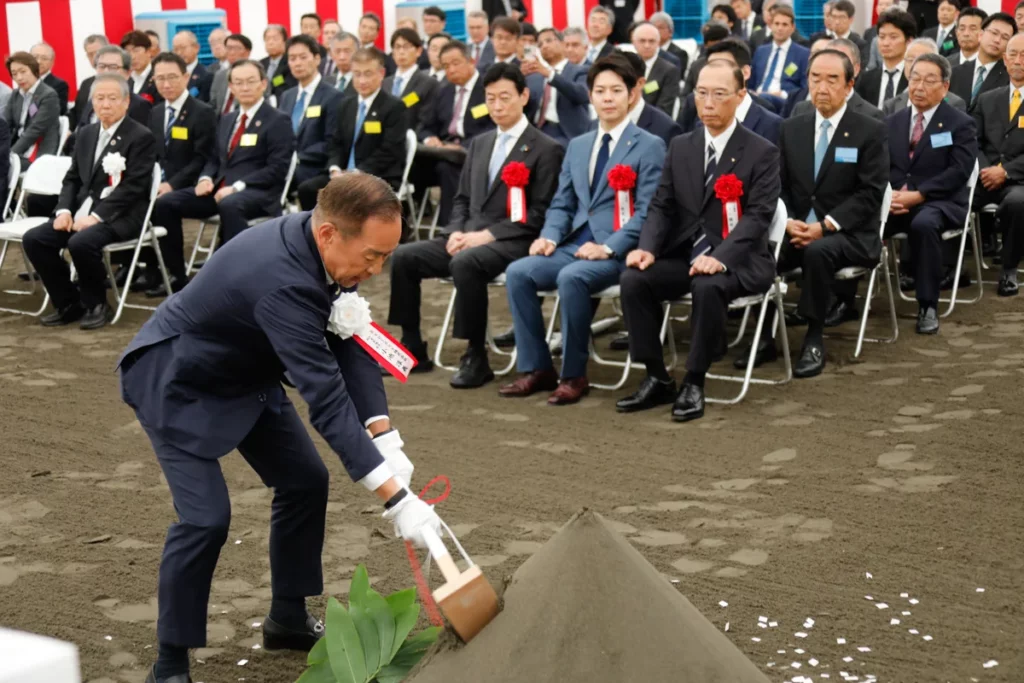
A groundbreaking ceremony at the Chitose Bibi World (an industrial park in Chitose City, Hokkaido) where the Rapidus’ IIM*-1 plant will be constructed in order to develop and produce advanced semiconductors. Source: Rapidus
But even TSMC intends to establish a second chip factory in Kumamoto Prefecture, so competition for qualified personnel will likely only intensify. That brings Rapidus to its next set of issues–accommodation. The upside, according to Keisuke Tsukada, a Chitose official, is that the city of Chitose is actively addressing the various challenges associated with the anticipated arrival of new residents and businesses over the next few years due to the Rapidus project.
He told the Japan Times that the city is on the verge of unveiling its plans for the upcoming fiscal year, particularly as construction for the firm reaches its peak. But there are also concerns that the Rapidus project might become a white elephant that relies on ongoing government subsidies, especially if other development plans fail to materialize.
Koike said in December 2022 that “it will take several trillion yen” (US$7 to US$15 billion or more) to get pilot production up and running, although he did not indicate where such funds would come from. But on April 26, 2023, the government stated it would give Rapidus 260 billion yen (US$1.8 billion) that would be used, in part, to fund the establishment of a pilot production plant at Chitose in Hokkaido.
Koike is also looking for comprehensive private investment and financing for additional investments in new fabrication plants. In short, not only is it difficult, but it is about to become very expensive for Japan to revive its semiconductor industry in a very short period.
Japan, though, feels compelled to attempt this endeavor, regardless of its economic viability.
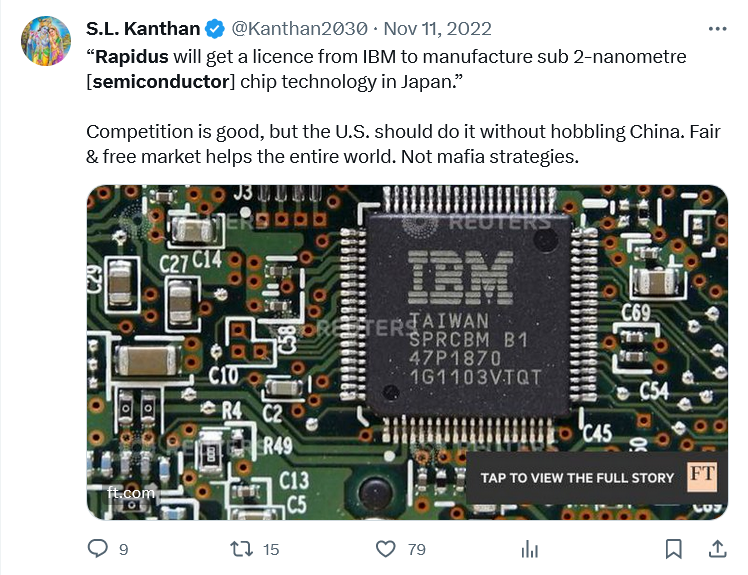
Rapidus – white elephant, or aid to the US chip war on China?






